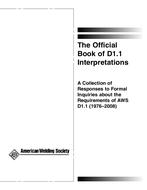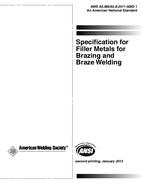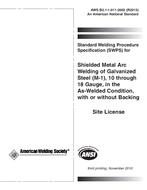This revolutionary document represents the most significant change to aviation welding standards in more than 30 years, including coverage in three areas never addressed in MIL-STDs: design, repair and nonflight hardware. And, for the first time, there are authoritative procedures for weld repair of in-service (existing) aerospace flight hardware. In fact, the standards use of weld repair technology enables weld overhaul beyond the areas originally designated for a weld.
The excellent coverage on inspection is bolstered with information to avoid both under- and over-inspection, arising from the D17 Committees position that, Choosing acceptance criteria beyond the capability of the welding process may lead to numerous inspection rejections, increasing costs. To help, tables on acceptance criteria (one in U.S. Customary units, the other in metric) have been included with distinctions for Class A, B, and C welds.
D17.1:2001 emphasizes, but is not limited to, fusion welding of aluminum-based, nickel-based, iron-based, cobalt-based, magnesium-based and titanium-based alloys using electric arc and high energy beam processes. 78 pages, 14 tables, 47 figures, 5 annexes, including Guidelines for Design, Analysis, and Fabrication of Weld Joints, and Commentary. Metric (SI) equivalents provided. ANSI Approved. Published in 2001.
Product Details
- Published:
- 01/19/2001
- ISBN(s):
- 0871716461
- ANSI:
- ANSI Approved
- Number of Pages:
- 95


